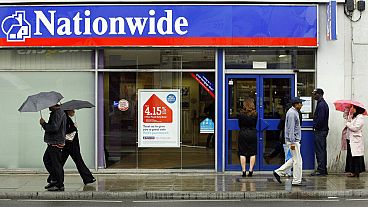By Alexandria Sage and Vibhuti Sharma
(Reuters) - Lyft Inc <LYFT.O> posted a jump in revenue on Wednesday in its second-quarter results, allowing the ride-hailing company to lift its forecasts as more riders used the service and price competition with rival Uber eased.
The company boosted its revenue outlook for the year to above Wall Street estimates and estimated third-quarter sales would exceed expectations, sending shares up as high as 11% after hours before they came down to a 1.8% increase.
A loss of $2.23 (£1.8) per share in the quarter was worse than the $1.74 per-share loss expected, on average, by analysts, according to IBES data from Refinitiv.
Lyft also said its lock-up period - the time after a public offering in which large shareholders are prohibited from selling shares - would come early, Aug. 19 instead of Sept. 24.
Shares of Uber Technologies Inc <UBER.N> rose after Lyft posted results, rising 2.6% in after-hours trade.
Lyft's 72% jump in revenue was fuelled by more active riders, who spent about a quarter more than they had a year ago.
"Wall Street has been eager for us to demonstrate our path for profitability," Chief Financial Officer Brian Roberts told Reuters, saying strength in Lyft's core ride-hailing business would "allow us to deliver more operating leverage."
Roberts said that pricing for rides had become "more rational" in the quarter, meaning that Lyft spends less on promotions to beat rival Uber.
Shares of Lyft are down 25% since their market debut on March 29, erasing about $5 billion from its market capitalisation, as investors continue to question whether the ride-hailing industry can be profitable.
Lyft and larger rival Uber, both loss-making, have historically relied on heavy subsidization to attract riders. While the companies last quarter reported signs that price competition was easing, both are also spending to expand services into areas including self-driving technology for Lyft and food delivery for Uber.
On average, Lyft received $39.77 in revenue from each of its nearly 22 million active riders in its second quarter as a public company, a 22% rise in revenue per rider and 41% increase in riders over the same period in 2018.
"As a result of this positive momentum, we anticipate 2019 losses to be better than previously expected," Chief Executive Officer Logan Green said in a statement.
Lyft has said its ride-hailing services would be profitable in the future, without giving any timeline, while also warning regulators that as a company it might continue posting losses as it invests heavily in self-driving cars, renting scooters and other ventures.
The company forecast third-quarter revenue of $900 million to $915 million, above the average analyst estimate of $840.9 million.
Lyft also raised its forecast for full-year revenue to between $3.47 billion and $3.5 billion, up from its prior range of $3.28 billion and $3.3 billion.
Its revenue in the second quarter rose 72% to $867.3 million, above the average analyst estimate of $809.3 million, according to IBES data from Refinitiv.
But its net loss widened to $644.2 million from $178.9 million a year earlier as costs more than doubled to $1.54 billion from a year earlier.
On a per share basis, it narrowed to $2.23 per share from $8.48 per share, a year earlier, as the number of outstanding shares rose.
Lyft, which beat Uber to go public first, operates in over 300 cities in the United States and Canada. It says it had over 30 million riders in 2018.
(Reporting by Vibhuti Sharma in Bengaluru and Alexandria Sage in San Francisco; Editing by Arun Koyyur and Lisa Shumaker)



